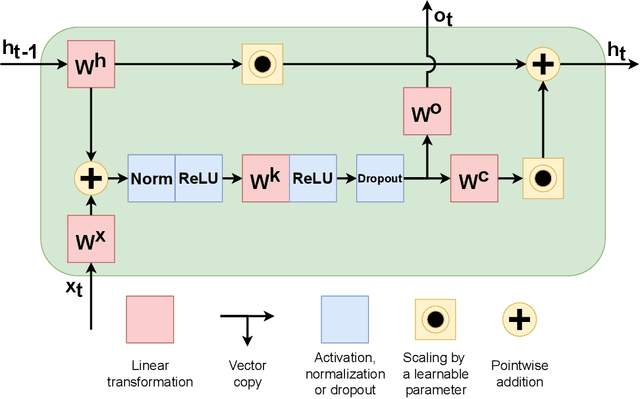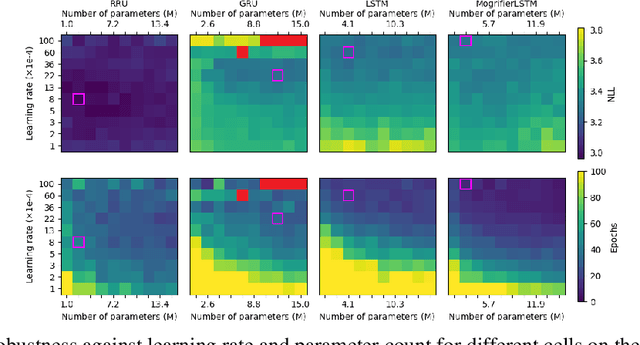Eliza Gaile
Gates are not what you need in RNNs
Aug 01, 2021



Abstract:Recurrent neural networks have flourished in many areas. Consequently, we can see new RNN cells being developed continuously, usually by creating or using gates in a new, original way. But what if we told you that gates in RNNs are redundant? In this paper, we propose a new recurrent cell called Residual Recurrent Unit (RRU) which beats traditional cells and does not employ a single gate. It is based on the residual shortcut connection together with linear transformations, ReLU, and normalization. To evaluate our cell's effectiveness, we compare its performance against the widely-used GRU and LSTM cells and the recently proposed Mogrifier LSTM on several tasks including, polyphonic music modeling, language modeling, and sentiment analysis. Our experiments show that RRU outperforms the traditional gated units on most of these tasks. Also, it has better robustness to parameter selection, allowing immediate application in new tasks without much tuning. We have implemented the RRU in TensorFlow, and the code is made available at https://github.com/LUMII-Syslab/RRU .
Goal-Aware Neural SAT Solver
Jun 14, 2021Abstract:Modern neural networks obtain information about the problem and calculate the output solely from the input values. We argue that it is not always optimal, and the network's performance can be significantly improved by augmenting it with a query mechanism that allows the network to make several solution trials at run time and get feedback on the loss value on each trial. To demonstrate the capabilities of the query mechanism, we formulate an unsupervised (not dependant on labels) loss function for Boolean Satisfiability Problem (SAT) and theoretically show that it allows the network to extract rich information about the problem. We then propose a neural SAT solver with a query mechanism called QuerySAT and show that it outperforms the neural baseline on a wide range of SAT tasks and the classical baselines on SHA-1 preimage attack and 3-SAT task.
 Add to Chrome
Add to Chrome Add to Firefox
Add to Firefox Add to Edge
Add to Edge